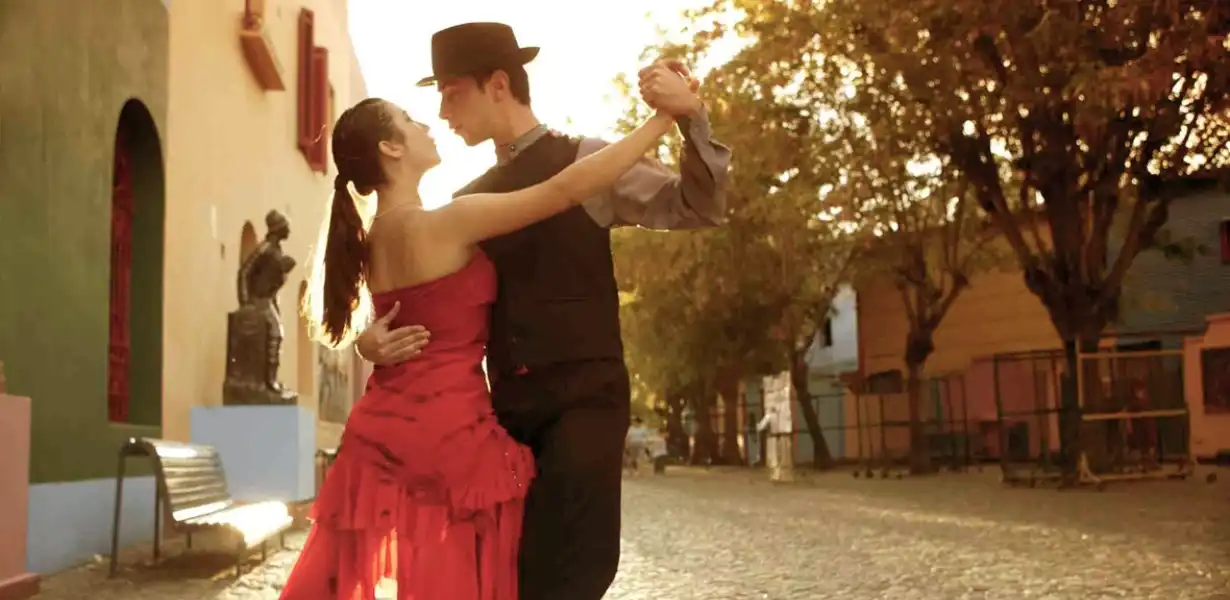
Steeped in history and brimming with emotion, Argentine Tango has emerged as a testament to the rich cultural heritage of Argentina. Born in the vibrant neighborhoods of Buenos Aires in the late 19th century, this dance form has evolved into a passionate expression of connection between partners. The graceful movements, intricate footwork, and intense connection between dancers make Argentine Tango a mesmerizing spectacle that transcends mere movement.
Unveiling the Origins: A Historical Glimpse
Argentine Tango traces its roots to the diverse cultural influences that converged in Buenos Aires during the late 1800s. A fusion of African, European, and indigenous music and dance forms led to the birth of Tango in the city’s bustling ports and vibrant streets. Its initial reputation as a dance of the marginalized shifted as it gained popularity among the aristocracy, ultimately evolving into a worldwide phenomenon.
The Essence of Argentine Tango: Music and Rhythm
Central to the dance is the soul-stirring music that accompanies every tango performance. The haunting melodies of the bandoneón, a type of accordion, blend with the rhythmic beats of drums and guitars to create an atmosphere of intensity and passion. The music sets the tone for the dance, guiding the dancers through a choreography that combines structured steps with improvised movements, allowing for a unique and emotional connection between partners.
Mastering the Dance: Techniques and Styles
Argentine Tango is renowned for its intricate footwork, which demands precision, balance, and control. Dancers communicate through subtle movements and the embrace, forging an unspoken bond that transcends words. The dance encompasses various styles, including the close embrace style and the more open, dramatic stage style. Whichever style you choose, the journey to mastery is one of continuous learning and self-expression.
Tango Tours: Exploring the Heart of Argentina
For enthusiasts seeking an authentic experience, Tango Tours offer an opportunity to immerse themselves in the dance’s birthplace. Embark on a journey to Buenos Aires, where you can explore tango’s origins, learn from seasoned instructors, and partake in milongas – social gatherings where tango aficionados dance the night away. These tours not only enhance your skills but also provide a deep understanding of the cultural context that has shaped this dance.
Learning Tango in Argentina: Embrace the Culture
Learning tango in Argentina is an experience like no other. Engage in classes led by skilled instructors who not only teach the steps but also convey the emotion and connection that define the dance. The city’s vibrant atmosphere and rich history infuse every movement with a sense of authenticity and depth. Whether you’re a novice or an experienced dancer, these classes offer a chance to connect with tango’s essence in its birthplace.
The Tango Community: Forging Connections
Beyond the dance itself, Argentine Tango fosters a sense of community that transcends borders. Milongas serve as meeting grounds for enthusiasts from diverse backgrounds, creating an atmosphere of camaraderie and shared passion. The embrace of a partner becomes a means of communication, allowing dancers to connect on a profound level. This sense of unity and connection is what makes tango more than just a dance – it’s a way of life.
Preserving Tradition: Tango in the Modern Era
While Argentine Tango is deeply rooted in tradition, it continues to evolve and adapt to the modern world. Contemporary dancers incorporate new elements while honoring the core principles of connection and emotion. Tango festivals, workshops, and competitions celebrate the dance’s rich history while showcasing its ongoing relevance. This dynamic fusion of old and new ensures that tango’s flame will continue to burn brightly for generations to come.
Frequently Asked Questions
Q1: Is Argentine Tango difficult to learn?
A1: While mastering Argentine Tango requires dedication, anyone can learn with patience and practice. Instructors tailor classes to different skill levels, making it accessible to beginners and experienced dancers alike.
Q2: Do I need a partner to learn Argentine Tango?
A2: While having a partner can enhance the experience, it’s not a requirement. Many classes rotate partners, allowing you to dance with different individuals and develop versatile skills.
Q3: What should I wear to a tango class or event?
A3: Wear comfortable clothing that allows for movement. Tango shoes with a flexible sole and a slight heel are recommended to facilitate footwork and balance.
Q4: Can I learn Argentine Tango online?
A4: Yes, there are numerous online resources, tutorials, and virtual classes available for those who can’t attend in-person lessons. However, experiencing tango in a live setting offers a more immersive experience.
Q5: What makes Argentine Tango unique compared to other dance forms?
A5: Argentine Tango stands out for its deep emotional connection between partners, its emphasis on improvisation, and the intimate embrace that defines the dance.
Final Words
Embark on a journey into the heart of Argentine Tango, where culture, history, and emotion intertwine to create a dance that ignites the soul. From the cobblestone streets of Buenos Aires to the global tango community, this dance form is a testament to the power of connection and expression. Immerse yourself in the music, master the steps, and let the allure of Argentine Tango captivate your senses.





